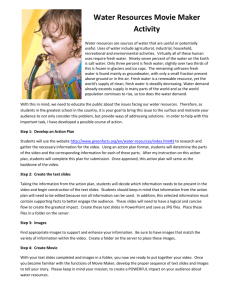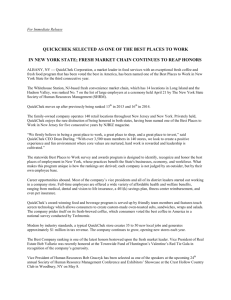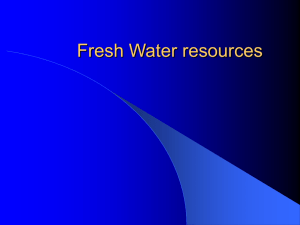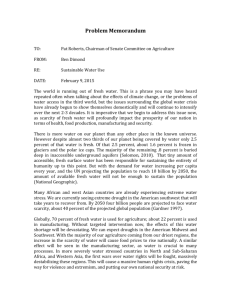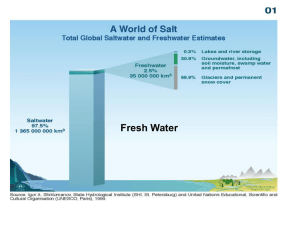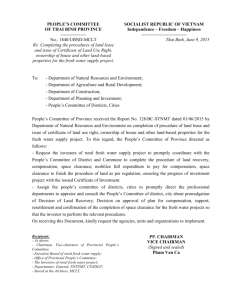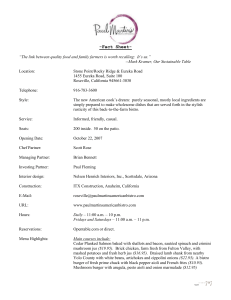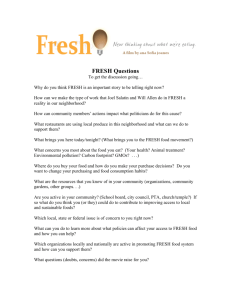Mission Viejo High School Model United Nations 30th Annual
advertisement
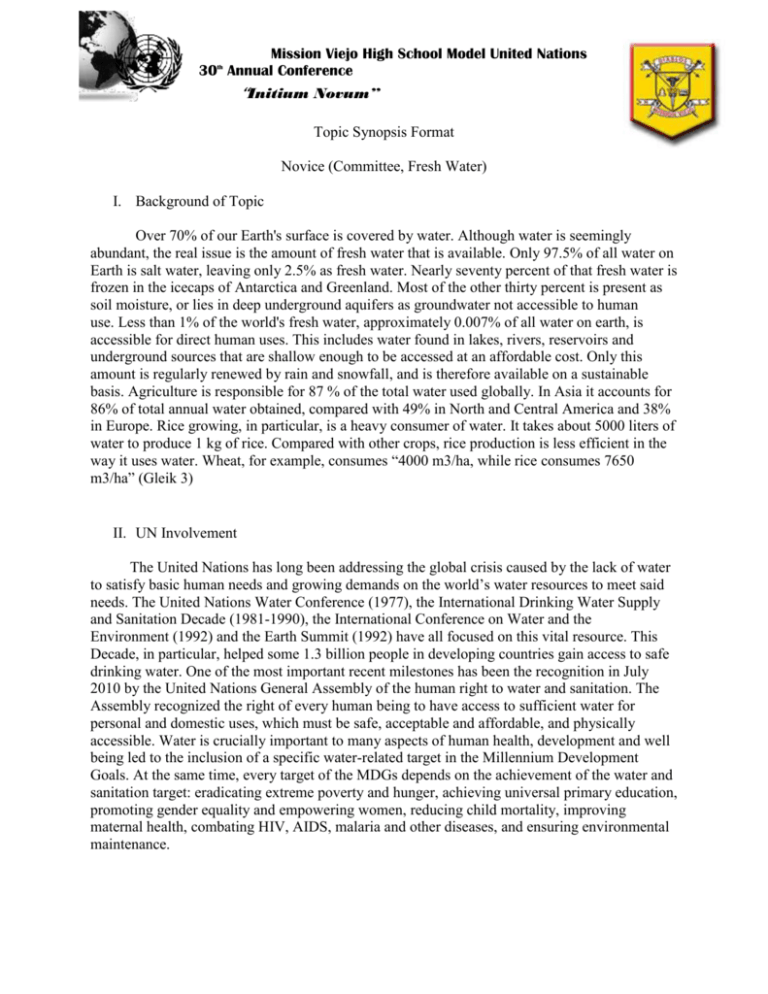
Mission Viejo High School Model United Nations 30 Annual Conference th “Initium Novum” Topic Synopsis Format Novice (Committee, Fresh Water) I. Background of Topic Over 70% of our Earth's surface is covered by water. Although water is seemingly abundant, the real issue is the amount of fresh water that is available. Only 97.5% of all water on Earth is salt water, leaving only 2.5% as fresh water. Nearly seventy percent of that fresh water is frozen in the icecaps of Antarctica and Greenland. Most of the other thirty percent is present as soil moisture, or lies in deep underground aquifers as groundwater not accessible to human use. Less than 1% of the world's fresh water, approximately 0.007% of all water on earth, is accessible for direct human uses. This includes water found in lakes, rivers, reservoirs and underground sources that are shallow enough to be accessed at an affordable cost. Only this amount is regularly renewed by rain and snowfall, and is therefore available on a sustainable basis. Agriculture is responsible for 87 % of the total water used globally. In Asia it accounts for 86% of total annual water obtained, compared with 49% in North and Central America and 38% in Europe. Rice growing, in particular, is a heavy consumer of water. It takes about 5000 liters of water to produce 1 kg of rice. Compared with other crops, rice production is less efficient in the way it uses water. Wheat, for example, consumes “4000 m3/ha, while rice consumes 7650 m3/ha” (Gleik 3) II. UN Involvement The United Nations has long been addressing the global crisis caused by the lack of water to satisfy basic human needs and growing demands on the world’s water resources to meet said needs. The United Nations Water Conference (1977), the International Drinking Water Supply and Sanitation Decade (1981-1990), the International Conference on Water and the Environment (1992) and the Earth Summit (1992) have all focused on this vital resource. This Decade, in particular, helped some 1.3 billion people in developing countries gain access to safe drinking water. One of the most important recent milestones has been the recognition in July 2010 by the United Nations General Assembly of the human right to water and sanitation. The Assembly recognized the right of every human being to have access to sufficient water for personal and domestic uses, which must be safe, acceptable and affordable, and physically accessible. Water is crucially important to many aspects of human health, development and well being led to the inclusion of a specific water-related target in the Millennium Development Goals. At the same time, every target of the MDGs depends on the achievement of the water and sanitation target: eradicating extreme poverty and hunger, achieving universal primary education, promoting gender equality and empowering women, reducing child mortality, improving maternal health, combating HIV, AIDS, malaria and other diseases, and ensuring environmental maintenance. Mission Viejo High School Model United Nations 30 Annual Conference th “Initium Novum” III. Possible Solutions Here are some basic solutions to the problem of freshwater. An improvement in the efficiency of water use is one proposal. Irrigation systems are often performed poorly and as a result this wastes up to 60 percent of the total water pumped before it reaches the intended crop. Efficient management and modern technology can improve this machine and more than double the water production. “Israel, for example, supports its population, its growing industrial base, with less than 500 cubic meters of water per person per year” (Rekacewicz 5). Water is often wasted because it is underpriced. Direct and indirect subsidies, especially for agricultural use, are still common in both developed and developing countries. Removing such subsidies and letting water prices rise can provide incentives for conservation and for the investments needed to spread more efficient technologies. IV. Bloc Positions 1. Typically those who consume the most freshwater also are the biggest exporters of it so there is no geographical correlation between different blocks. V. Guiding Questions 1. How do we get fresh water to those who need it? 2. What are the nations that require the most access to fresh water? 3. Why is the access to fresh water so important? 4. What could the consequences be to those who cannot access fresh water?


